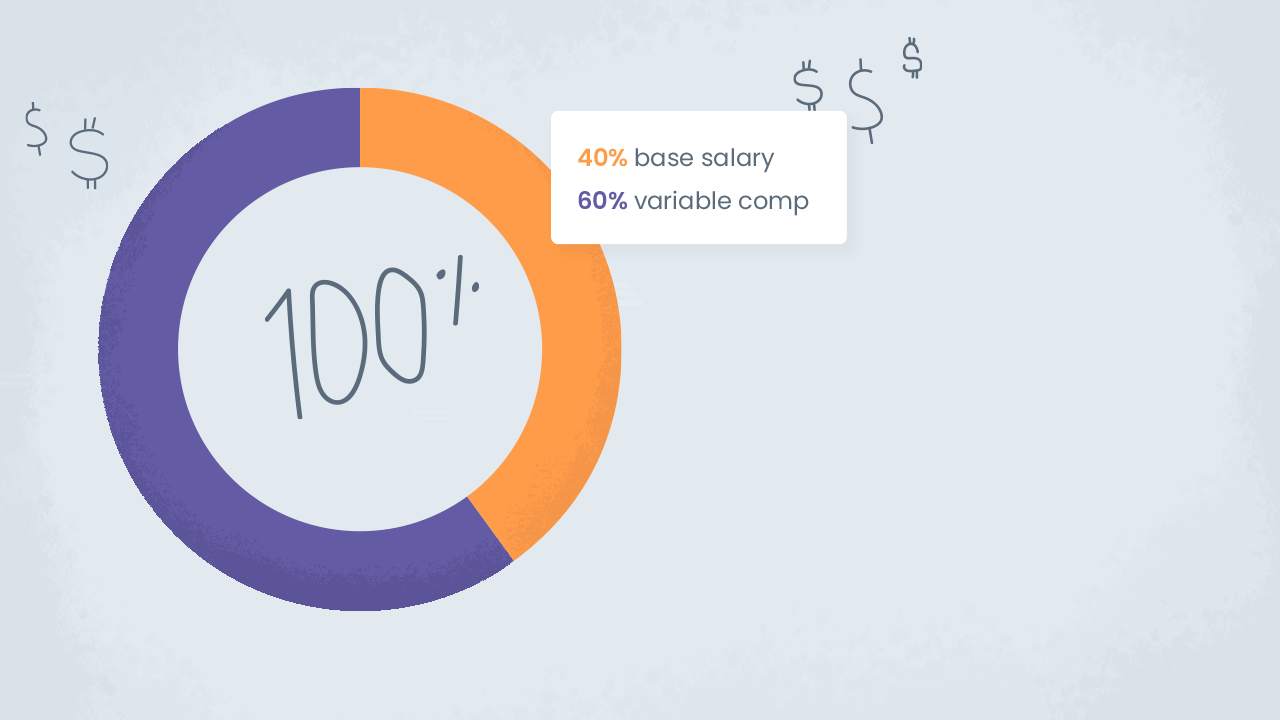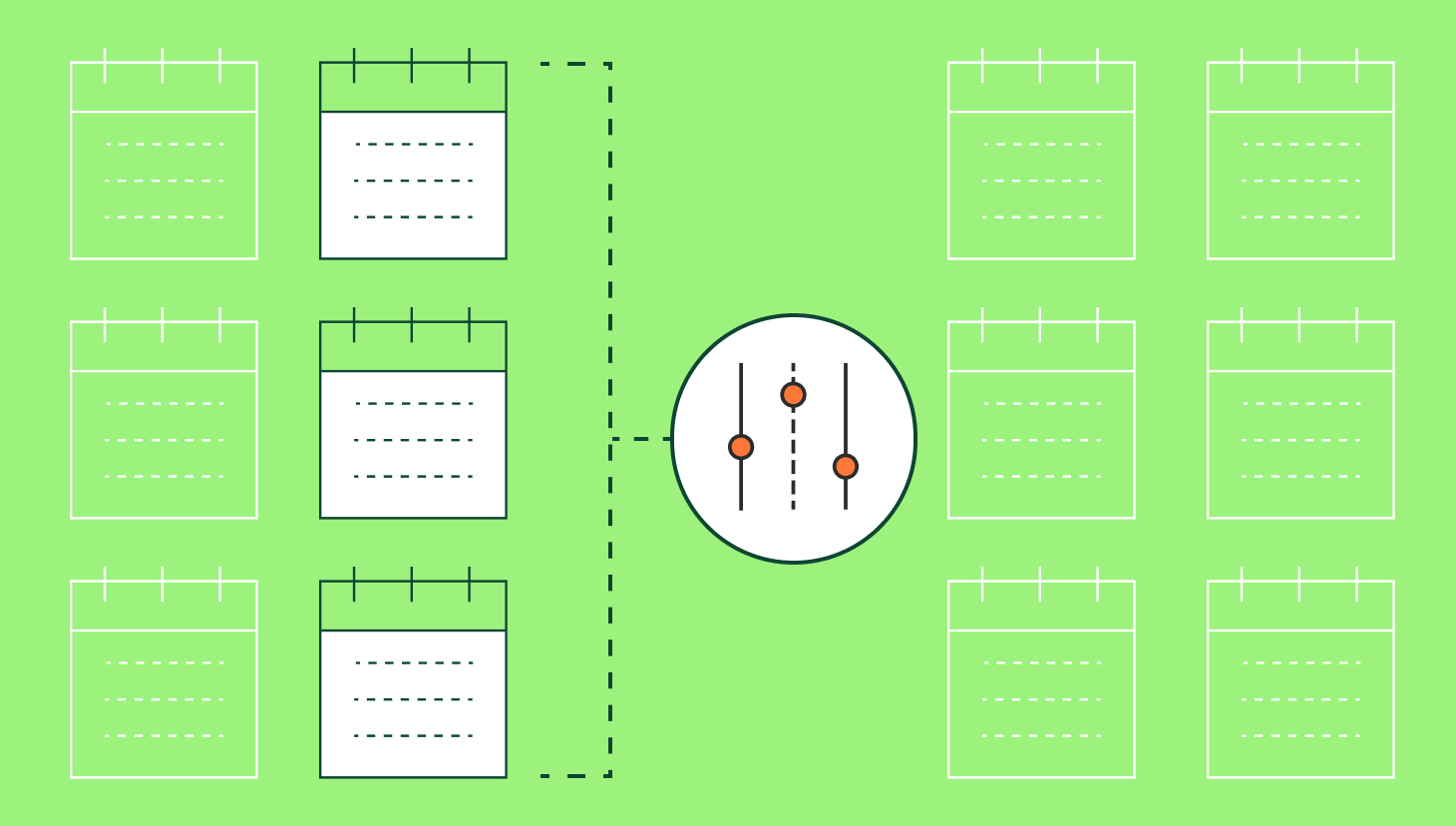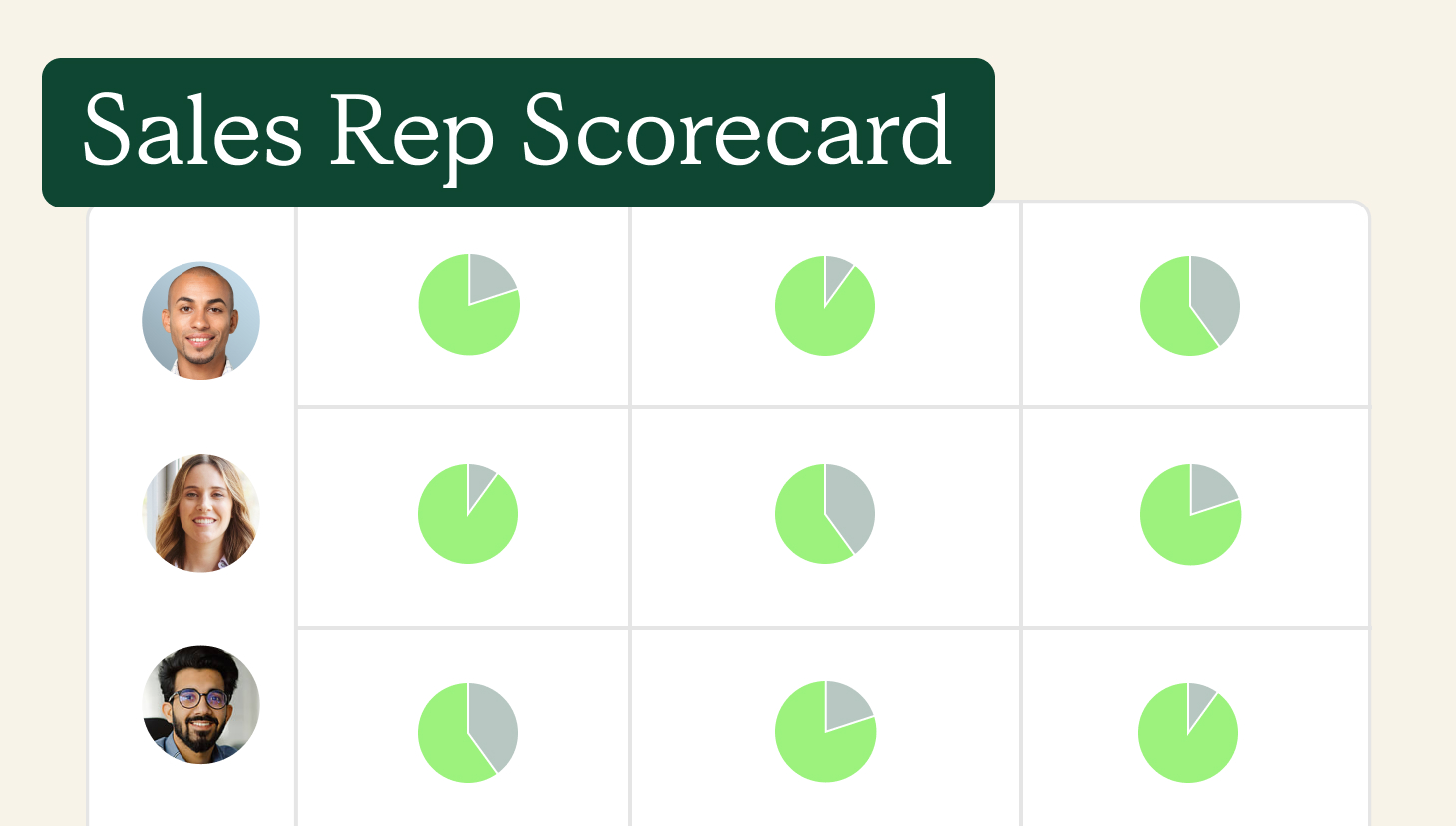From learning how to cold call prospects to finding ways to shorten the sale cycle, sales reps have a lot on their plate. But there’s one concern that supersedes them all — compensation. And with that, comes pay mix.
In sales, compensation is made up of base pay and extras, such as bonuses and commission. Together, those elements make up your pay mix.
What is pay mix?
Pay mix is the ratio of base salary and on-target commission. This might be confused for on-target earnings, but it’s slightly different.
Now you may think Pay mix sounds like something you’d eat at a party, but it’s even more important. This ratio outlines how a sales rep gets paid. You’ll most often see it represented in a percentage format. One half of the ratio is the base pay, and the other half is commission and bonuses, also known as incentive compensation. When combined, the two form your on-target earnings (OTE).
Remember that pay mix is about more than defining compensation. The right mix can help the company achieve its own goals, too. Commission pay drives salespeople to increase their demos, connect with more customers, and keep a sharp eye on their performance. In other words, a good pay mix means more selling! Fair base pay ensures the team feels taken care of while they sell your newest product.
Try QuotaPath for free
Try the most collaborative solution to manage, track and payout variable compensation. Calculate commissions and pay your team accurately, and on time.
Start TrialCalculating pay mix
It’s easy to calculate pay mix. On-target commission divided by OTE equals the percentage of your pay tied to the commission. Base salary divided by OTE equals the percentage tied to base salary.
For instance, if your on-target earnings are $100,000 and your base pay is $54,000, your pay mix is 54/46. Usually, it’s expressed as base salary first, then on-target commission, but it’s important to confirm that’s the case!
What’s the average pay mix?
According to our 2023 Sales Compensation Trends Survey, the most-used and industry-recommended pay mix in SaaS consists of 50/50, or 50% base and 50% commission and bonus for sales roles.

Other industries may have a different default pay mix. The numbers may also shift, depending on position and/or experience. A sales executive is more likely to have their pay mix weighted toward base pay, while a rep traditionally relies more on incentive pay.
Marketing is a good example of an industry with a higher base. In real estate, agents have no base salary and rely solely on commission for a pay mix of 100/0.
The skewed mix seen in real estate is unusual, though. A pay mix weighted heavily toward base pay can demotivate reps who have little incentive to chase commissions. When the pay mix is out of balance and in favor of commission, reps get stressed, and concerns over income might tank morale.
Pay mix is important, but it depends on the ability to calculate commission accurately and efficiently. In other words, you must know exactly how much you or your reps are bringing to the table. QuotaPath’s innovative software is designed to make tracking and managing sales commissions easier than ever. To get started, create a workspace for free today.



